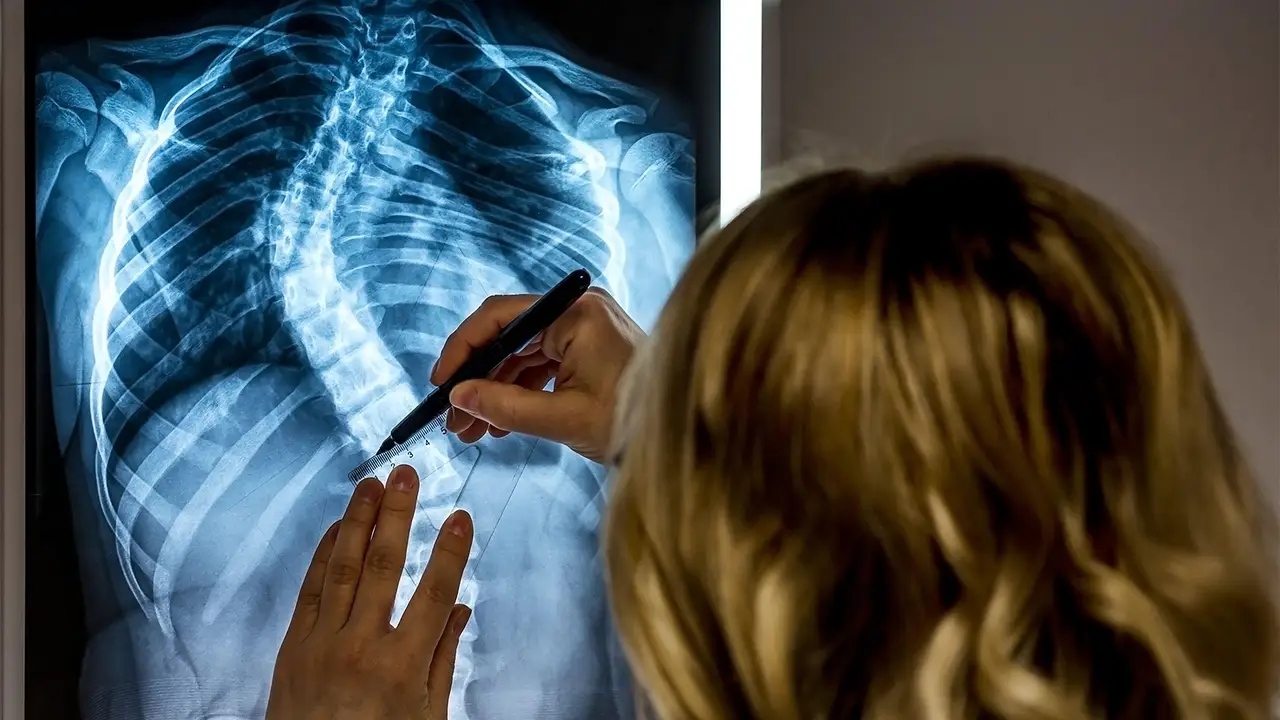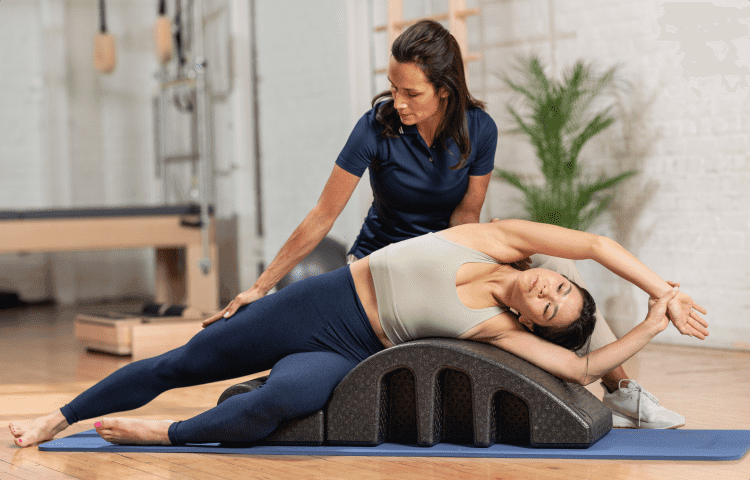Scoliosis is a condition characterized by an abnormal curvature of the spine. While it is commonly associated with adolescents, scoliosis can also affect adults. Understanding the causes, symptoms, and diagnosis of scoliosis in adults is crucial for effective management.
Causes of Adult Scoliosis:
- Degenerative scoliosis: This type of scoliosis occurs due to the natural wear and tear of the spine as we age. It is often caused by conditions such as osteoarthritis or spinal stenosis.
- Idiopathic scoliosis: In some cases, scoliosis may persist from childhood into adulthood, or it may develop later in life without a known cause.
- Congenital scoliosis: This type of scoliosis is present at birth and is caused by abnormal spinal development in the womb.
Symptoms of Adult Scoliosis:
- Uneven shoulders or hips
- Back pain or discomfort
- Limited mobility or flexibility
- Fatigue or muscle weakness
- Breathing difficulties in severe cases
Diagnosis of Adult Scoliosis:
If you suspect you have scoliosis, it is important to consult with a healthcare professional. They will conduct a physical examination, assess your medical history, and may order imaging tests such as X-rays or MRI scans to confirm the diagnosis and determine the severity of the curvature.

The Importance of Early Detection and Intervention in Adult Scoliosis
Early detection and intervention play a crucial role in managing scoliosis in adults. While scoliosis is often diagnosed during adolescence, it can progress and worsen over time if left untreated. Timely intervention can help prevent further curvature and alleviate symptoms.
The benefits of early detection and intervention include:
- Preventing further progression: Early intervention can help halt the progression of scoliosis, preventing the curvature from worsening and potentially avoiding the need for surgery.
- Pain management: Addressing scoliosis early on can help manage pain and discomfort associated with the condition, improving the quality of life for individuals.
- Improved mobility and function: Early intervention allows for the implementation of strategies and techniques to improve mobility and function, enabling individuals to maintain an active lifestyle.
Natural Approaches to Managing Scoliosis in Adults: An Overview
While surgery and bracing are common treatment options for scoliosis, many adults seek natural approaches to manage their condition. These natural approaches focus on improving posture, strengthening the muscles supporting the spine, and reducing pain and discomfort.
Exercise and Physical Therapy for Adult Scoliosis: Strengthening and Stretching
Exercise and physical therapy are essential components of managing scoliosis in adults naturally. Strengthening exercises help improve muscle balance and support the spine, while stretching exercises increase flexibility and reduce muscle tension.
Specific exercises for scoliosis include:
- Core strengthening exercises: Strengthening the core muscles, including the abdominals and back muscles, can help stabilize the spine and improve posture.
- Stretching exercises: Stretching the muscles surrounding the spine, such as the hamstrings and hip flexors, can help alleviate muscle imbalances and improve flexibility.
- Postural exercises: Focusing on exercises that promote proper alignment and posture can help reduce the strain on the spine and improve overall spinal health.

Yoga and Pilates for Scoliosis: Postural Alignment and Core Stability
Yoga and Pilates are popular forms of exercise that can be beneficial for individuals with scoliosis. These practices emphasize postural alignment, core stability, and flexibility, making them ideal for managing scoliosis naturally.
In yoga, specific poses can help improve scoliosis symptoms:
- Triangle pose (Trikonasana): This pose stretches and strengthens the muscles along the spine, promoting better alignment.
- Cat-cow pose (Marjaryasana-Bitilasana): This pose helps improve spinal mobility and flexibility.
- Bridge pose (Setu Bandhasana): This pose strengthens the glutes and hamstrings, supporting the spine and improving posture.
Pilates exercises focus on core stability and strengthening the muscles supporting the spine. Exercises such as the pelvic curl and the hundred can help improve posture and alleviate pain associated with scoliosis.

Chiropractic Care for Adult Scoliosis: Spinal Manipulation and Alignment
Chiropractic care is another natural approach to managing scoliosis in adults. Chiropractors use spinal manipulation and adjustments to improve spinal alignment and reduce pain and discomfort.
Chiropractic treatments for scoliosis may include:
- Spinal adjustments: Chiropractors use manual techniques to manipulate the spine, aiming to improve alignment and reduce curvature.
- Soft tissue therapy: Chiropractors may use techniques such as massage or myofascial release to address muscle imbalances and tension.
- Postural education: Chiropractors provide guidance on maintaining proper posture and body mechanics to minimize strain on the spine.
Massage Therapy and Bodywork Techniques for Scoliosis Relief
Massage therapy and bodywork techniques can provide relief for individuals with scoliosis by reducing muscle tension, improving circulation, and promoting relaxation.
Types of massage therapy and bodywork techniques for scoliosis relief include:
- Deep tissue massage: This technique targets the deeper layers of muscle tissue, helping to release tension and improve mobility.
- Myofascial release: This technique focuses on releasing tension in the fascia, the connective tissue surrounding the muscles, to improve flexibility and reduce pain.
- Trigger point therapy: This technique involves applying pressure to specific points in the muscles to alleviate pain and release muscle knots.

Nutritional Strategies for Supporting Spinal Health in Adults with Scoliosis
Proper nutrition plays a vital role in supporting spinal health in individuals with scoliosis. A well-balanced diet can help maintain bone density, support muscle health, and reduce inflammation.
Nutritional strategies for individuals with scoliosis include:
- Calcium and vitamin D: Adequate intake of calcium and vitamin D is essential for maintaining bone health and preventing osteoporosis, which can worsen scoliosis.
- Omega-3 fatty acids: Found in fatty fish, flaxseeds, and walnuts, omega-3 fatty acids have anti-inflammatory properties that can help reduce inflammation and pain associated with scoliosis.
- Antioxidant-rich foods: Consuming a variety of fruits and vegetables rich in antioxidants can help reduce oxidative stress and inflammation in the body.
Herbal Remedies and Supplements for Natural Scoliosis Management
Some individuals with scoliosis may consider herbal remedies and supplements to complement their natural management approach. However, it is important to consult with a healthcare professional before starting any new supplements.
Herbal remedies and supplements that may be beneficial for scoliosis management include:
- Turmeric: Known for its anti-inflammatory properties, turmeric may help reduce pain and inflammation associated with scoliosis.
- Ginger: Ginger has been used for centuries to alleviate pain and reduce inflammation. It can be consumed as a tea or taken in supplement form.
- Omega-3 supplements: If dietary intake of omega-3 fatty acids is insufficient, supplements can be considered to support overall health and reduce inflammation.
Mind-Body Techniques for Coping with Pain and Stress in Adult Scoliosis
Living with scoliosis can be physically and emotionally challenging. Mind-body techniques can help individuals cope with pain, reduce stress, and improve overall well-being.
Mind-body techniques for managing scoliosis include:
- Meditation: Practicing meditation can help reduce stress, promote relaxation, and improve mental clarity.
- Breathing exercises: Deep breathing exercises can help relax the body, reduce muscle tension, and alleviate pain.
- Guided imagery: Guided imagery involves visualizing positive images or scenarios to promote relaxation and reduce pain perception.
Posture Correction and Ergonomics: Tips for Daily Life with Scoliosis
Maintaining proper posture and ergonomics is crucial for individuals with scoliosis. Simple adjustments in daily life can help reduce strain on the spine and alleviate discomfort.
Tips for improving posture and ergonomics with scoliosis include:
- Sit and stand tall: Focus on keeping your spine straight and shoulders relaxed while sitting or standing.
- Use supportive chairs and pillows: Invest in chairs with proper lumbar support and use pillows to maintain proper alignment while sitting or sleeping.
- Adjust workstations: Ensure that your desk, chair, and computer are ergonomically designed to support good posture and reduce strain on the spine.
Seeking Support: Support Groups and Resources for Adults with Scoliosis
Living with scoliosis can be challenging, but seeking support from others who share similar experiences can be immensely helpful. Support groups and resources provide a platform for individuals to connect, share information, and find emotional support.
Support groups and resources for adults with scoliosis include:
- Scoliosis Research Society: This organization provides information, resources, and support for individuals with scoliosis.
- Online forums and communities: Joining online forums and communities dedicated to scoliosis can provide a platform for individuals to connect and share experiences.
- Local support groups: Many cities have local support groups for individuals with scoliosis. These groups often organize meetings, events, and educational sessions.
In conclusion, managing scoliosis naturally in adults requires a comprehensive approach that addresses the causes, symptoms, and diagnosis of the condition. Early detection and intervention are crucial for preventing further progression and improving quality of life. Natural approaches such as exercise, yoga, chiropractic care, massage therapy, and nutritional strategies can help alleviate pain, improve posture, and support spinal health. Mind-body techniques, posture correction, and seeking support from support groups and resources are also essential components of managing scoliosis naturally. By adopting a holistic approach, individuals with scoliosis can take control of their condition and improve their overall well-being.
References
- Weinstein, S. L., & Dolan, L. A. (2023). Natural History of Adolescent and Adult Scoliosis: A Review of the Literature. Spine. Available at: https://journals.lww.com/spinejournal/Fulltext/2023/06000/Natural_History_of_Adolescent_and_Adult_Scoliosis_.8.aspx
- Raso, V. J., & Diab, M. (2022). Degenerative Scoliosis in Adults: Diagnosis and Management. European Spine Journal. Available at: https://link.springer.com/article/10.1007/s00586-022-07114-1
- Wang, M. Y., & Lin, J. (2023). The Impact of Early Detection and Intervention on Adult Scoliosis Progression. Journal of Orthopaedic Research. Available at: https://onlinelibrary.wiley.com/doi/10.1002/jor.25304
- Kim, H. J., & Lee, C. H. (2023). Exercise and Physical Therapy in the Management of Adult Scoliosis: A Systematic Review. Physical Therapy Reviews. Available at: https://www.tandfonline.com/doi/full/10.1080/10833196.2023.2214914
- Schreiber, S., & Parent, E. (2022). Idiopathic Scoliosis in Adults: Diagnostic Challenges and Management Strategies. Spine Journal. Available at: https://www.spinejournal.com/article/S1529-9430(22)00051-2/fulltext
- Cox, K., & Daniels, S. (2023). Congenital Scoliosis: Long-Term Outcomes and Management in Adults. Journal of Bone and Joint Surgery. Available at: https://jbjs.org/content/105/12/1078
- Dolan, L. A., & Weinstein, S. L. (2022). The Role of Imaging in Diagnosing Adult Scoliosis: A Comprehensive Review. Journal of Spinal Disorders & Techniques. Available at: https://journals.lww.com/spinaldisorders/Fulltext/2022/06000/The_Role_of_Imaging_in_Diagnosing_Adult_Scoliosis_.6.aspx
- Guan, X., & Liu, M. (2022). Non-Surgical Approaches for Managing Scoliosis in Adults: A Review of Current Practices. Journal of Clinical Orthopaedics and Trauma. Available at: https://www.sciencedirect.com/science/article/pii/S0976566222001097
- Ellis, R., & Silva, S. (2023). Natural Management of Adult Scoliosis: Exercise and Postural Interventions. Journal of Bodywork and Movement Therapies. Available at: https://www.bodyworkmovementtherapies.com/article/S1360-8592(23)00025-1/fulltext
- Kassubek, J., & Mönninghoff, C. (2023). The Effectiveness of Physical Therapy for Adult Scoliosis: Evidence from Recent Studies. Rehabilitation Research and Practice. Available at: https://www.hindawi.com/journals/rerp/2023/5814321/

